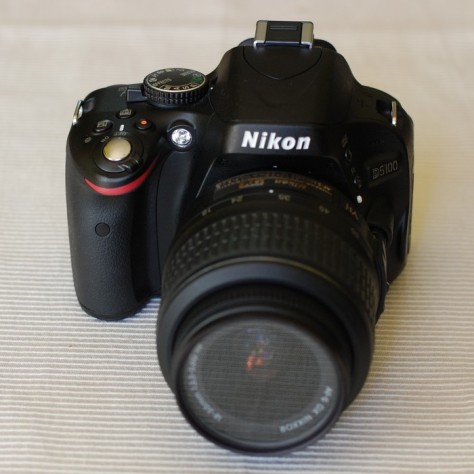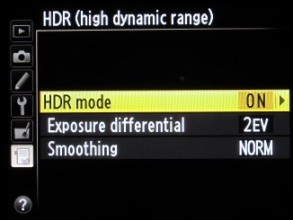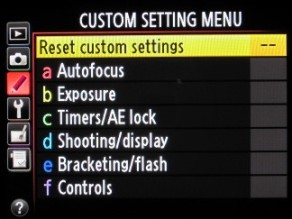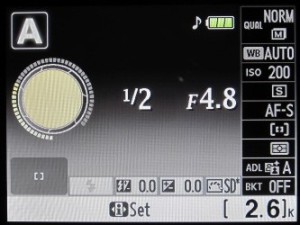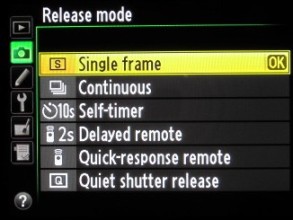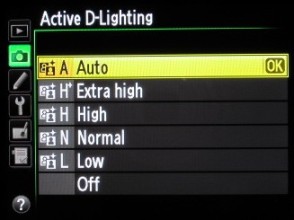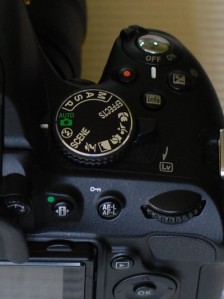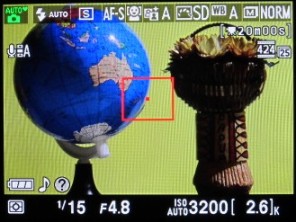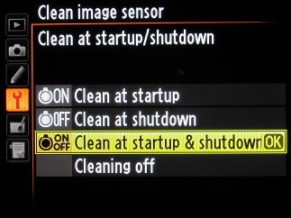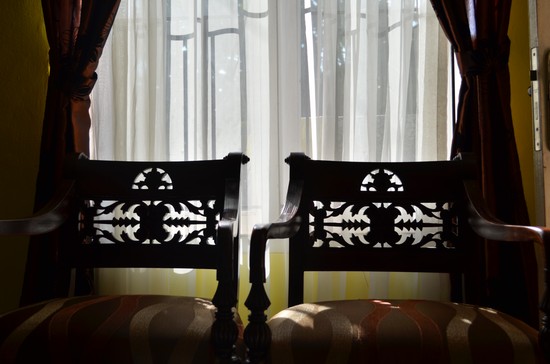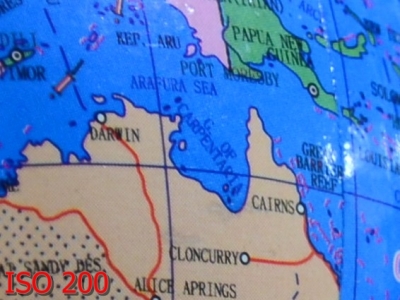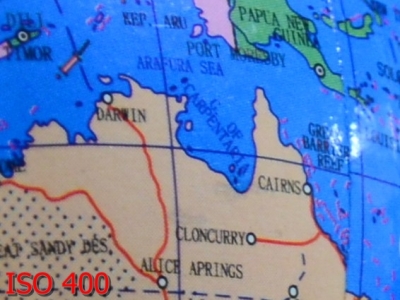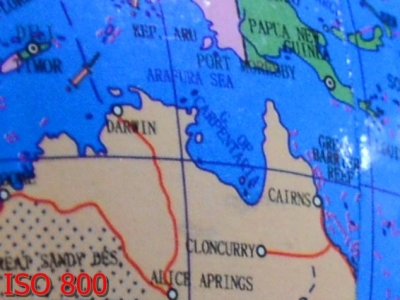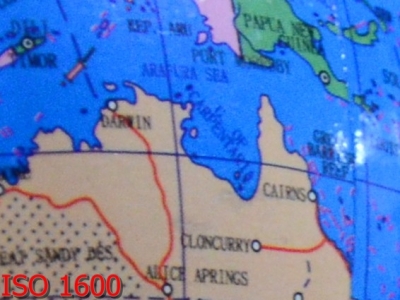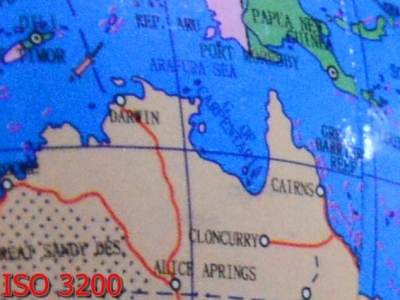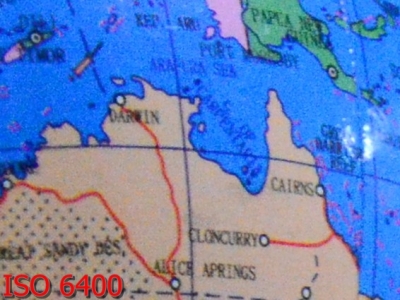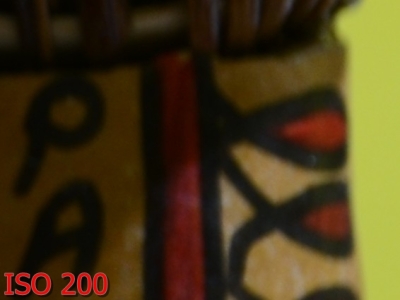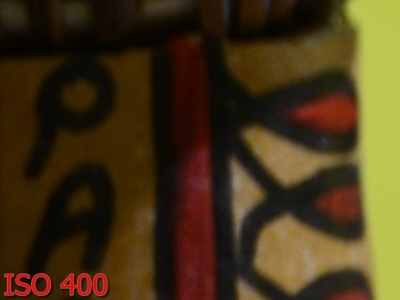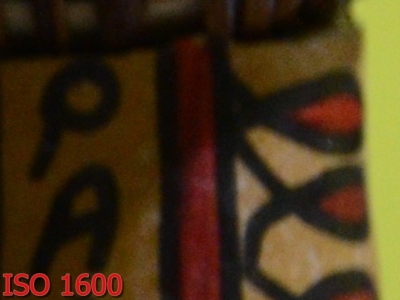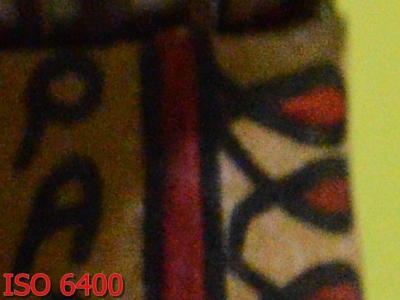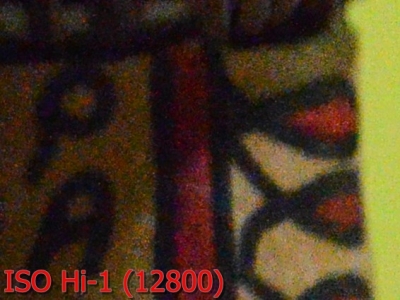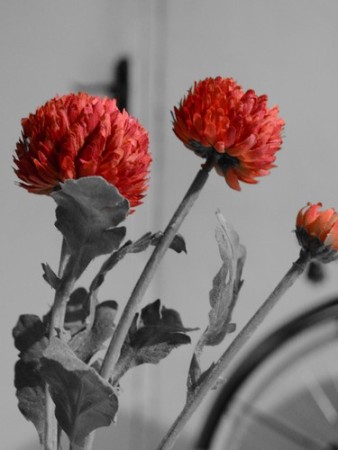| Nikon D5100 16.2MP CMOS Digital SLR Camera with 18-55mm f/3.5-5.6 AF-S DX VR Nikkor Zoom Lens |
Nikon D5100 launch in answer to Canon 600D ten months ago. Just a reminder, though still classified as D5100 and 600D DSLR beginner class, but both were quite expensive. So do not be surprised if the camera is like a less popular, such as those that limited funds will be more interested in the D3100 or Canon 1100D, or 550D. For those whose funds are more likely to be more interested in the Nikon D90 or Canon 60D. Then why do I choose a D5100? Check out the reviews and the conclusions that I made more.
Nikon D5100 sold a package with kit lens 18-55mm VR that can be used to start shooting. The camera is a successor of the D5000 is known as the first Nikon DSLR camera screen that can be folded. D5000 folding screen design has been criticized for flip down, so it is not strange that the D5100 LCD flip design is fixed laterally to flip the left (more common)... As a beginner DSLR, D5100 still has much in common with his brother D3100, which is a plastic body, without the focus motor, 420 pixel RGB metering module that old (D40 I have been using this module 5 years ago), the viewfinder mirror (not prism), the lack of key there is no direct access and a small LCD screen at the top...
 |
| Nikon D5100 |
Physical Review Nikon D5100
I bought the Nikon D5100 made in Thailand, either before or after the big flood that flooded the Nikon factory in Thailand a few months ago. I tried positive thinking wrote, hopefully no problems with the quality and performance. I feel the quality of the materials of the same body as the Nikon D5100 is another that is sturdy, the connections are tight and there is no impression of a loose / frail. Unfortunately, the four-way was not feeling pressured, as too soft. The most annoying is the SD card door on the right which feels a bit loose even when conditions are covered.
Not much difference between the mean size of the D40 with the D5100, both are small and lightweight, yet another grip feels a bit too small for my hand. But I liked the rubber coating on the grip and support the right thumb which gives extra comfort while holding. Design D5100 DSLR Nikon glance similar to the other when viewed from the front, but when viewed from the back then looked very much change the button layout. This is due to the folding screen hinges now on the left, so it must be cast out many buttons that are usually lined up on the left. Be the MENU and INFO buttons to move to the top, while the PLAYBACK button, ZOOM IN and ZOOM OUT to move to the right side. For those who usually use Nikon digital SLR camera will feel strange at first because of the many changes taking D5100 button layout. But somehow repositioned the Nikon fixed with a slick, do not seem 'messy' and is easily accessible by our right thumb (except the MENU button to use the left thumb). As a result I did not experience difficulty in adapting to the migration of those buttons. Yet there is also a good side, so I can operate the camera with one hand because it is shared by the majority of my right thumb.
One thing I like about the D5100 body are its LCD screen. In addition to the excellent sharpness of the screen (900 thousand pixels), I also liked the flexible folding design, and can be rotated to position the screen into the body to protect the screen when not in use. Nikon D5100 has two remote sensors, one on the front and one on the back (near the MENU button). At the top there appears to be a special red button to record video. On the left side there is a rubber door that when opened will look like for some USB ports (and multifunctional with the AV cable), HDMI, GPS and an external mic. At the bottom there is the door to remove the battery. Slot design of the battery is getting better with a safety system so that when the battery cover is opened, the battery is not immediately drove off from the camera.
Look at the D5100 with the screen position is open as above. The concept of this screen should be applied in all DSLR because it can be useful when the camera is held high or shooting as she squats (with live-view mode of course). This folding screen is also good to use to record video with a difficult angle.
Features and menus
D5100 camera includes a full-featured camera beginners. Different from the D3100 is pretty basic features, the D5100 on some more advanced settings are included as well as HDR mode, 14 bit RAW, bracketing, different levels of Active D-Lighting Effect mode and range. D5100 also has a higher resolution sensor (16 MP vs 14 MP), a higher maximum ISO (6400 vs 3200), a faster burst (4 fps vs. 3 fps) and a sharp LCD screen (900 thousand versus 230 thousand pixels ) and can be folded. But the D5100 and D3100 as in the case of metering module, the module AF and neither provided a focus motor (so to be able to use auto focus lens AF-S).
In the shooting mode in addition to existing standard mode Auto, P, A, S, M and Scene Mode, Effect mode there are also interesting, although not necessarily required. Options available include Miniature Effect effect, Night Vision, Low Key, High Key, Sketch, silhouette and color swap. Precisely the features that I like the D5100 is HDR shooting could take two photos with different exposures and then combine them and produce an image with a wider dynamic range. No PC required!
Menu in D5100 D3100 was somewhat different. Menu in the D5100 over the camera to match the class above it like a D90 or D7000 with the Custom settings feature a variety of complex with a letter code and color.
Problem video recording capabilities D5100 has been very good with a full HD movie, a wide selection of frame rate, AF-F mode (continuous focus) and an external mic (unfortunately the built-in mic is mono). No manual exposure capability in D5100 when recording video, we need to first determine the desired aperture before starting to record. The good news is, we can adjust the microphone sensitivity level can even be set to off.
The new generation of cameras like the D5100 is already able to set Picture Control to JPG varying results. That way we do not need to process images one by one on the computer to get the contrast or saturation that is higher or lower. There are various styles that have been assigned at the factory such as Standard, Neutral, Vivid and so on. If you want, any style can be set more parameters such as sharpness, contrast, brightness, saturation and tone (hue) colors. Thus, each owner of the D5100 camera can store a different style to taste.
Bracketing feature allows you to take three different image setting, the difference is usually dark or light exposure (AE). But the D5100 features expanded into several options, namely AE bracketing, WB bracketing, and ADL.
Operation
However D5100 camera is not classified as middle-class camera. So do not imagine there is such a special button to change the WB, ISO or the AF mode. For that we need to replace it by going to MENU. Fortunately, Nikon provides a shortcut to replace a variety of important settings by pressing the INFO button (symbolized by Addons) on the back. Press the button once Addons then the screen will display important information such as what mode is being used, how many shutter-aperture-selected ISO and various other important info. To change this setting simply press the Addons there again.
There are various drive modes on the D5100, for example single frame (S), continuous, self timer and Quiet shutter. Unlike in the D3100, D5100 option in drive mode should be sought via the MENU. Quiet shutter itself will dampen the sound of the mirror so it is not too loud for my ears anyway even though there is almost no difference.
Results can be viewed by pressing the playback button is blue. The images can be displayed in full screen images or technical data accompanied by a photo shoot like the picture above.
Performance
As a beginner DSLR camera, I do not expect high performance from this D5100. So that, this camera is quite normal in business performance. For example, the maximum shutter speed of 'only' 1/4000 second and flash sync speed is only 1/200 sec (I'll miss the ability of D40 can sync 1/500 sec). For business burst or continuous shooting these cameras are only about 4 fps, but still better than the D40 is only 2.5 fps. Then in terms of start-up, shutter lag, shot to shot camera does not have any complaints, it works as expected. The good news, Nikon EXPEED engine is put on generation 2 for a more powerful D5100. Evident when the Active D-Lighting mode is enabled, the camera does not need additional time to process a new photo taken. This is different from previous generations when the camera is activated, each photograph ADL such as oversized camera to process the ADL in the photo, the process is about half to one second.
D5100 auto focus capability is very good, with high flexibility thanks to the 11 AF points (although only the midpoint of the cross type) and the focal point can be selected manually or automatically. About the focus servo, D5100 can also follow moving objects (dynamic area) and can even recognize objects from color so that it can follow the movement of the object and keep the focus of his best, though the object is moving left to right or front and back, thanks to the 3D feature AF tracking.
At the top of the camera there is a lever to activate the live-view mode. Unlike live-view as a lever in the D3100 and D7000 are located on the back of the camera, the D5100 is the lever located on the right side of the mode dial. So if you want to take pictures by looking at a preview image on the LCD screen, slide the lever first live-view is in the direction of the arrow, and if you want to record a video then the red button is pressed. Performance of the camera while in the live-view mode quite well, although for the auto focus must shift from the phase detection (11 points) to the detection of contrast. It auto-focus when live view is slower, but I feel other than the D5100 DSLR is quite fast in locking the focus. Another advantage with the live-view is able to detect faces, as well as on the screen can be displayed enlargement of the middle area of the photographed area, useful for shooting macro or manual focus while. In the video mode AF-F, auto focus are able to do continuous focus, meaning the camera will always try to get the focus while the object moves. Whose name is attempted, sometimes successfully and sometimes fail. So it still features AF-F in the video mode is not satisfactory. Live-view itself has a timer so that after a few minutes he would die in order to save battery life and prevent overheating sensor.
The picture above shows what will appear on the LCD screen when entered into the live-view mode. In general, the display on the screen is quite clear, bright and natural with a variety of indicators to enliven the display screen. When the indicator is annoying, just press the INFO button and the screen will be clear from the various codes and numbers. Press INFO again will bring up a grid to aid composition. Unfortunately there is no live histogram display as a live-view on the D5100.
White Balance performance on the D5100 include accurate to Auto WB and preset the existing range. When the tone is obtained from the preset WB less to taste us, can also perform advanced settings by sliding axis tone in Amber-Blue or Green-Magenta so that all the spectrum colors (RGB or CMY) can be achieved. Unfortunately we can not directly enter the color temperature in Kelvin units as the other cameras more advanced class.
Sensors and Photo Results
16 MP CMOS sensor is one reason I bought the D5100. Why? I am not minded mega pixels anyway, but because the sensor is identical to that used in the D7000 camera the picture is the best known, even at high ISO. The reason behind it is worn prossor Expeed2 14 bit technology makes able to record a dynamic range wider than 12-bit processors such as D3100. When the 16 MP is too high, the available choices 9 4 MP or MP in the Image Size setting in MENU.
As with other cameras in general, to avoid the attachment of dust on the sensor, already available in MENU features cleaning sensor. There are several options such as sensor cleaning option above picture, and this clean-up process (which is thrilling to shed dust sensor) takes 1 to 2 seconds.
The combination of the sensor with the engine 14-bit HDR mode is active and Active D-Lighting can produce images with better dynamic range than usual. I tried to photograph a common condition that would be difficult to get the full dynamic range in the usual manner as shown below:
Photo above was dark in the chair and the wall, because the camera tries to keep the details of metering in areas of light (windows) so that other areas become dark. When exposure compensation is increased then what happens detail in bright areas will be lost (washout). So in order to get a better picture of our eyes see resemble the original, I tried to use the HDR mode is coupled with Active D-Lighting to a position of Extra High, then the result could be like this:
It looks more natural? Details on the window and the chair and the wall is obtained by balanced. Then I also did a test shoot with various ISO and deliberately rely on the value of light crude to see D5100 ISO performance and how severe noisenya at high ISO. This is the object to be photographed:
And this is the crop in the central part of the globe (this area is getting enough light) at various values of ISO :
And this is part of the object which received less light (souvenirs of Papua) :

Well, from the crop above seems clear that the D5100's sensor is awesome. At least, up to ISO 1600 and enough light to photograph the results obtained are still low noise. At ISO 3200 noise then seemed to be annoying, but still good enough to be seen. At maximum ISO 6400 noise that appears practically equivalent to ISO 400 on a pocket camera, where detailed images seem to decline and noise look more colorful (chroma noise). ISO Hi-1 and Hi-2 available for any marketing needs, so that sounds cool. In fact, this high ISO does not fit given in DSLR cameras with APS-C sensor. Look how badly noisenya especially in the dark crop.
Effect mode also features some of which I think would be useful one day, such as choosing one color and others made the monochrome is no longer done on a computer, but can be arranged before the shooting. By choosing to maintain the red color, then I can make a color other than red so monochrome like the following photo (cool ...):
Conclusion
Well, finally arrived at the end of this D5100 review. In conclusion D5100 is okay in the affairs of its CMOS sensor, especially when dealing with high contrast or when using high ISO. The combination of engine 14-bit HDR feature and Active D-Lighting will help save a lot of detail in bright areas as well as a dark area. ISO 6400 which is actually a normal maximum ISO is still proper to use, plus a bonus there is an ISO expansion to ISO 25 600 when forced to (and there is also a night vision effect which can take pictures in very low light conditions, but the result is black and white). Other effects are also interesting as the effect of a miniature (toy camera) or selective color. I also like the LCD screen that allows as much time taking pictures or recording video in a different angle. The results of a good photo of this full-featured not be redeemed at a price too expensive, or have to make it big and heavy cameras. D5100 remains small, lightweight and seemingly similar to the D3100 camera beginners alike.
So what compromise? As the camera is worth 7 million, somewhat unfortunately it is only considered if the D5100 camera beginners. Because the price of 8 million existing Canon EOS 60D as a semi-pro cameras are relatively cheap with a series of semi-pro features. If the D5100 has several direct access buttons to the WB, ISO or AF mode, certainly more fun. Then the camera is quite expensive it can not auto focus with old Nikon lenses such as AF or AF-D, so goodbye old school lenses are cheap but steady. Nikon D5100 also not allow users to set up a wireless external flash (Canon EOS 600D when you can) and have not been able to choose the value of the Kelvin White Balance manually (although preset WB and color shift in the WB setting is quite sophisticated). Finally, the Nikon D5100 should give the user the freedom to set shutter and aperture while recording video, since video feature on the D5100 is very good (when viewed from the video resolution, continuous focus mode AF-F and audio settings).
That review can I make to share with readers. The bottom line for me is like having D5100 D7000 (in quality and completeness of the images and the menu features) but with a body like the D3100 (in matters of shape and weight). Best of both world right? Hopefully this review helpful, regards ..
Read more reviews, specification details and buy this Nikon D5100 16.2MP CMOS Digital SLR Camera with 18-55mm f/3.5-5.6 AF-S DX VR Nikkor Zoom Lens which is cheaper. Please click : HERE.


